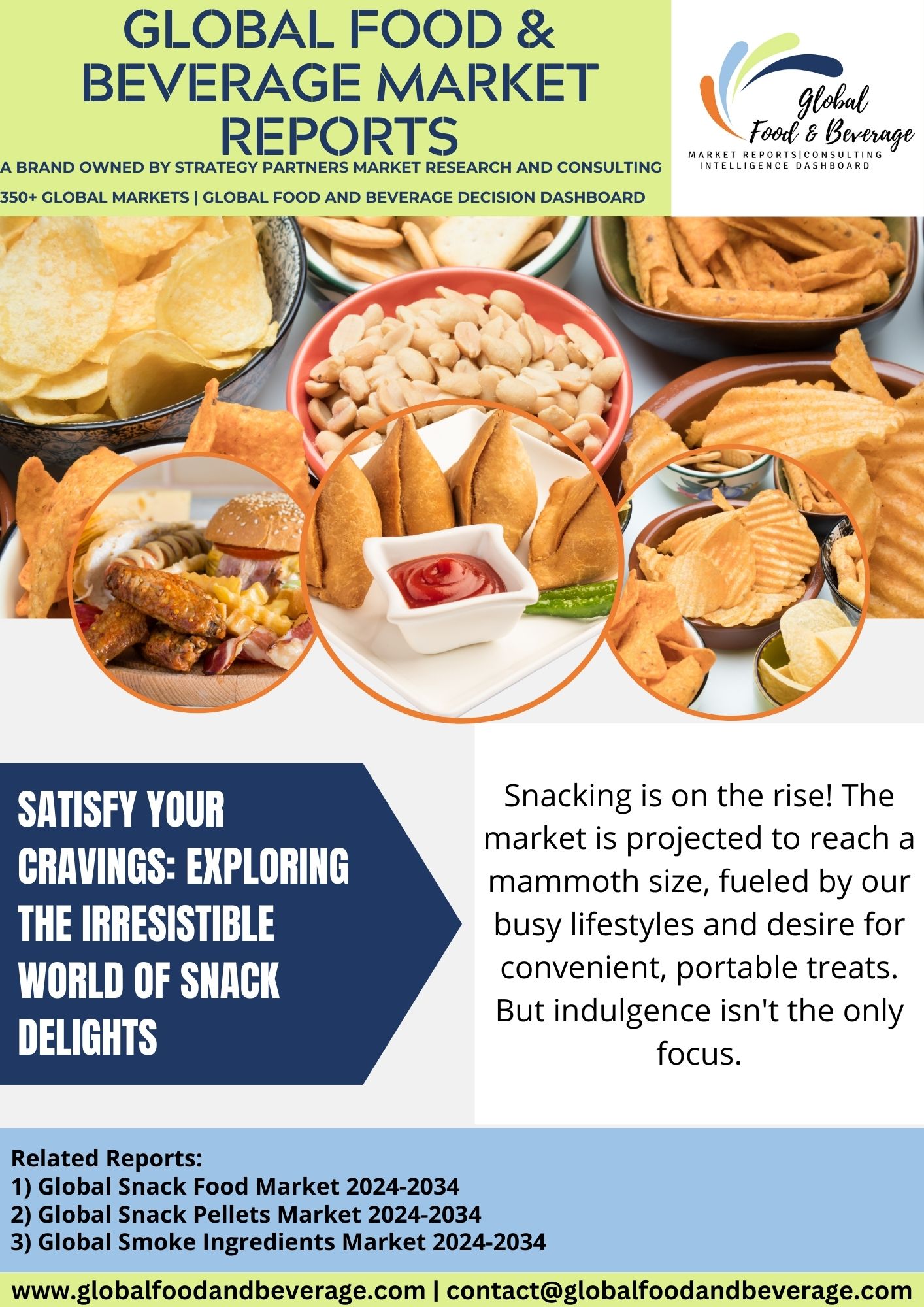Snack food has become an integral part of modern dietary habits, offering a wide array of convenient and flavorful options to consumers seeking quick bites between meals. This diverse category encompasses a vast range of savory, sweet, and crunchy treats that cater to various tastes and preferences.
Savory snack foods include classics like potato chips, pretzels, and popcorn, often seasoned with an assortment of flavors, from traditional salt to more adventurous profiles like barbecue, sour cream and onion, or spicy chili. These snacks are beloved for their satisfying crunch and ability to satiate savory cravings.
On the sweet side, snack foods embrace an equally diverse selection. Chocolate bars, candy, cookies, and fruit-based snacks provide a quick source of sweetness for those with a sweet tooth. The convenience of individually packaged portions makes these treats ideal for on-the-go consumption.
Health-conscious consumers have also influenced the snack food landscape, leading to the rise of better-for-you options. Snack bars, nuts, seeds, and dried fruit have gained popularity as snacks that offer nutritional benefits, such as protein, fiber, and essential vitamins. These options cater to individuals seeking convenient and nutritious snack choices to support their active lifestyles.
Snack food innovation extends beyond traditional categories, with the emergence of novel and creative offerings. Protein-packed snacks, plant-based alternatives, and unique flavor combinations showcase the evolving nature of the snack industry, adapting to changing consumer preferences and dietary trends.
Convenience stores, supermarkets, and specialty snack shops provide a plethora of options for consumers to explore and enjoy. The snack food industry’s adaptability to diverse tastes, dietary needs, and cultural influences ensures its continued relevance in the global food market, offering something for everyone, whether it’s a quick energy boost, a guilty pleasure, or a nutritious bite.
ADVANCEMENT:
The snack food industry has undergone remarkable advancements, responding to shifting consumer preferences, health-conscious trends, and a demand for innovative flavors and formats. One significant development lies in the fusion of taste and nutrition, with a focus on creating snacks that not only satisfy cravings but also offer health benefits.
Advancements in ingredient selection have led to the incorporation of alternative and functional ingredients, such as plant-based proteins, ancient grains, and superfoods. These additions cater to consumers seeking healthier snack options without compromising on taste.
Technology has played a crucial role in snack food innovation, with the use of advanced cooking techniques, such as air frying and vacuum frying, to create snacks with reduced oil content. Additionally, advancements in food processing have enabled the development of gluten-free, non-GMO, and allergen-free snack options, appealing to a diverse range of dietary preferences.
The rise of smart packaging and on-the-go convenience has further transformed the snack industry. Portion-controlled and resealable packaging, as well as the incorporation of sustainable materials, contribute to a more environmentally friendly and user-friendly snacking experience.
In the era of personalized nutrition, customization has become a key trend. Snack brands are offering customizable options, allowing consumers to tailor snacks to their specific taste preferences and dietary needs. These advancements collectively reflect the snack food industry’s commitment to meeting the evolving demands of consumers for healthier, more diverse, and convenient snacking choices.
CHALLENGE:
The snack food industry faces several challenges in the global market shaped by shifting consumer preferences and societal trends. One significant challenge is the demand for healthier options. As consumers prioritize health and wellness, snack food manufacturers must innovate to offer products with reduced salt, sugar, and unhealthy fats while maintaining the taste and texture that consumers expect.
Regulatory compliance and labeling complexities add to the challenges. Different regions have varying regulations regarding nutritional claims, permissible ingredients, and labeling standards. Navigating these diverse standards requires snack food manufacturers to invest in compliance expertise to ensure market access and consumer trust.
Sustainability concerns and responsible sourcing are growing challenges. Consumers are increasingly conscious of the environmental impact of food production. Adopting sustainable sourcing practices for ingredients, environmentally friendly packaging, and ethical supply chain practices is becoming more critical for the snack food industry.
Consumer preferences and customization pose ongoing hurdles. The snack food market is diverse, and consumers seek unique flavors, textures, and dietary-specific options. Offering a wide variety of products while addressing regional and cultural preferences requires manufacturers to stay agile and responsive to changing consumer demands.
Market competition and pricing pressures influence the industry. The snack food market is highly competitive, with various brands vying for consumer attention. Price fluctuations, influenced by factors like raw material costs and market demand, can impact the affordability and profitability of snack products.
CONCLUSION:
In conclusion, the snack food industry is thriving, propelled by changing consumer lifestyles, taste preferences, and the demand for convenient, on-the-go options. Innovations in flavors, textures, and healthier alternatives cater to the diverse and evolving snacking habits globally. As consumers seek both indulgence and nutritional value, the industry responds with a wide array of choices. The rise of premium and artisanal snacks, coupled with a focus on sustainable packaging, contributes to market dynamism. With a continued emphasis on health, flavor variety, and convenience, the snack food sector offers ongoing opportunities for manufacturers to capture the ever-expanding and diverse snacking market, ensuring sustained growth.
